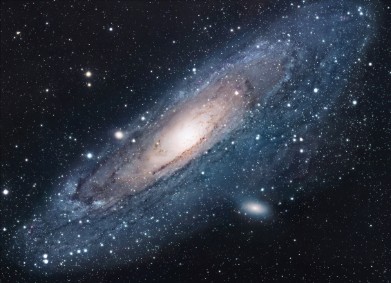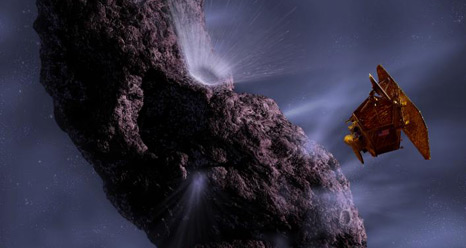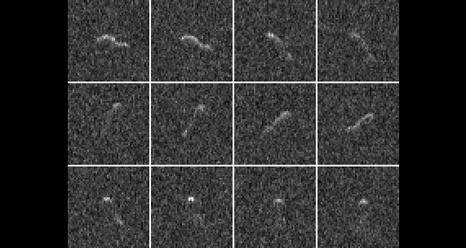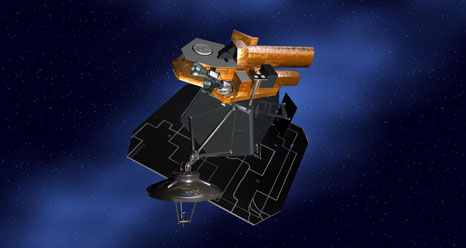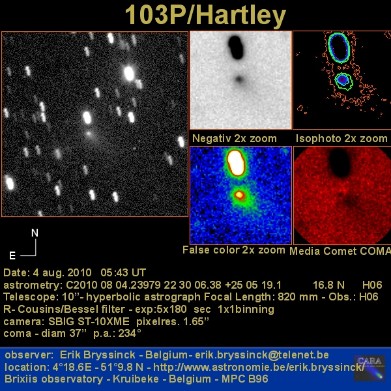Take a human journey through space and time to the beginning of the universe and you’ll learn a little about yourself, the world around you and your true place in the bigger world you experience on a daily basis.
Take a walk deep into the darkness of a cold, clear night, far from the glare of interfering human light, and you can gaze upward at a night sky filled with stars-of-wonder, much like your first ancestors did for the first time thousands of years in the past. Lay the back of your head on the cold Earth for a few hours and stare deeply into the vastness of the night’s sky before your eyes and watch the stars parade across the sky as they have since the birth of spaceshipearth1. Your mind will be sharing common thoughts and feelings of awe, wonder and smallness with the billions of humans that have witnessed this scene and thousands of generations of star-gazing ancestors that walked the Earth before you.
Thousands of years after the time of these star-gazing ancestors, modern science has managed too shine the light of discovery on many questions concerning the universe we live in and the true role humans play in the grand cosmic-play that’s unfolding before your eyes. The relative age of the Earth has been determined in relation to the universe and scientists delve deeper into the mystery of how the seemingly simple starting ingredients of the cosmic-womb can lead to rich diversity of life on one dusty ball of water far from no where. We will embark on a cosmic journey of discovery from the beginning of time to the present day as we survey the contents of the night’s sky close to spaceship Earth, measure the scale and majesty of the universe in human terms, and the relative motion of the Earth as it travels through space and time to its ultimate destination. This cosmic journey will allow your mind to develop a larger picture of the universe around you as human scientists understand it and provide you with the knowledge and understanding that can serve as a framework upon which you can build your mental model of the universe and determine your part in the grand cosmic play in which you find yourself.
After staring in wonder at the mystery of the stars above your head for a time it will be easy to understand how our ancestors looking upward at the sun, stars, moon and planets - that relative to your point of view seem to revolve around spaceship Earth - believed the Earth was the center of the known universe and all we survey. The heavenly bodies above your head will appear to circle above you as you stare upwards at the night sky and you won’t feel the spinning motion of the moving Earth beneath you as it spins on its axis through the cold darkness of space and time. These facts make it easy to believe in and develop a belief system with the Earth at the center and humans standing on the pedestal of supremacy in the universe.
In the intervening years since our common star-gazing ancestors first starred upwards in wonder at the night’s sky science has determined that spaceship Earth is a nondescript little ball of dusty-water circling an average sun among an infinity of space and time, which has taken part in a cosmic dance that has continued unabated for around 4.5 billion years. The human journey through space and time to the present moment in the history of planet Earth and the universe has been filled with pitfalls we as a race have managed to avoid until this moment in the history of space and time. Humans have for the most part managed to change ancient beliefs in an Earth-centered universe that once seemed firmly based in common sense and logic to a more modern view of the universe around us. Science has provided the verifiable facts we need to determine the truth of human experience and strengthen natural bonds to the vast universe you see before your eyes in ways our first star-gazing ancestors could never imagine. This has allowed scientists to develop a cosmic-picture of the universe as our senses experience it that can help us create a mental picture of the real universe we journey through on a daily basis. Take a cosmic journey of discovery and wonder as we travel through space and time to the beginning of the universe and back again and shine the light of discovery on mysteries deep in the minds and hearts of all humans that have walked the Earth since mankind first starred upward in wonder and awe at the night’s sky above your head and return to the place of our birth, the stars above us.
In terms of the part humans have played and still play in the big picture of the universe, the Earth we live on is one of a number of planets circling the sun we call Sol, along with thousands of asteroids and comets that make up our solar system and the uncountable number of dust particles floating between them. The universal address of the Sol system is the Milky Way galaxy, just past the half-way point from the center of the galaxy to the edge of the galactic disc. Just one of the billions or possibly a trillion stars or more making up the Milky Way galaxy that shine their energy into the cold darkness of space, Sol is an average sun, just like billions you can see looking up into the night’s sky above you. A nondescript, average-looking ball of hydrogen and helium easily overlooked among the infinity of stars that make up the island of suns space scientists refer too as the Milky Way galaxy. The Milky Way is in fact a rather large galaxy in comparison to the galaxies that are part of what space scientists call the Milky Way’s local supercluster of galaxies. Just one of a seeming infinity of galaxies space scientists see as they journey visually into the cold darkness of space and time before you, the Milky Way Galaxy is part of the 40 or more galaxies space scientists refer too as the local group of galaxies in the part of the universe we reside.
The night sky you see above you might appear to be weblike in nature, with galaxies and clusters arranged in huge sheets and chains of stars that seemingly go on forever and ever. Pockets of stars are dotted across the sky before your eyes, forming giant stellar bodies called superclusters of galaxies that in the case of the Milky Way Galaxy are referred too as the local group of the Milky Way Galaxy, with vast voids of space and time separating them containing occasional lone galaxies. The universe before your eyes is made up of the sum total of the matter and energy contained within the superclusters and voids between them and there are humans that believe this fact makes human existence and the Milky Way Galaxy relatively insignificant in the bigger picture of the universe and space and time. The human ability and desire to continuously delve into the mysteries of the universe around us and improve our place in the cosmic-picture could be the difference that tips the balance in favor of humans being a significant contributor to the universe, though, despite our relative insignificance in the cosmic picture before your eyes.
One question you might be pondering as you stare into the vastness of the night’s sky above your head is how did the young human race come to be born amid the seeming infinity of space and time before your eyes? Modern science tells us we humans are a relative newcomer to the endlessness of space and time and the battle for survival on planet Earth. The journey upon which we embark will examine the evidence presented by scientists to support the belief in the relative insignificance of Sol, the planet Earth, the formation of the solar system, and the miracle of the birth of sentient life on one little ball of dusty water in the universe. The first part of the journey we undertake will take us through the history of the development of present theories and evidence presented by space scientists to support their belief in the relative insignificance of all we know and believe to be true and important.
Looking upward into the vastness of space and time of the night’s sky above you it isn’t possible to ascertain that space scientists have determined the stars in the galaxies above you are speeding away from each other at a rate that has been measured relative to the universe you see. Scientists have measured the relative rate at which the distances between the galaxies above you’re increasing with the passage of time. The important point in this fact is that if the universe around us is expanding, all of space and time you see above you must have once been closer together. Relative estimates calculated by space scientists indicates that this rate of expansion must have started at least 14 billion years in the past. This beginning of the universe space scientists have called the Big Bang, and while overall the universe has continued to expand unabated, there are areas in the vastness of space and time where the force of gravity has overcome the force of expansion created by the Big Bang. This is significant because it means that while the galaxies above you in the night’s sky continue to speed away from the center of the Big Bang individually, the parts within galaxies are not expanding relative to one another. In contrast, galaxies and galaxy clusters continue to expand relative to one another, despite the force of gravity pulling them together and to form into larger clumps of gas and dust, which space scientists have dubbed stars and planets. The forming of large clumps of gas and dust is part of what space scientists call the life cycle of the stars, planets and galaxies, and although these stellar bodies are not life forms as space scientists define them, they do go through a life cycle of sorts that scientists have documented and analyzed at length.
